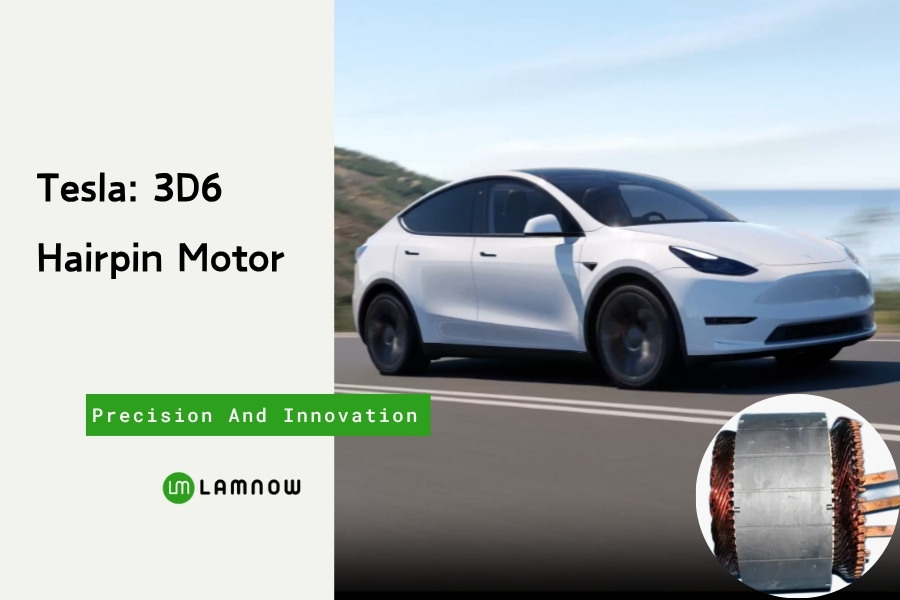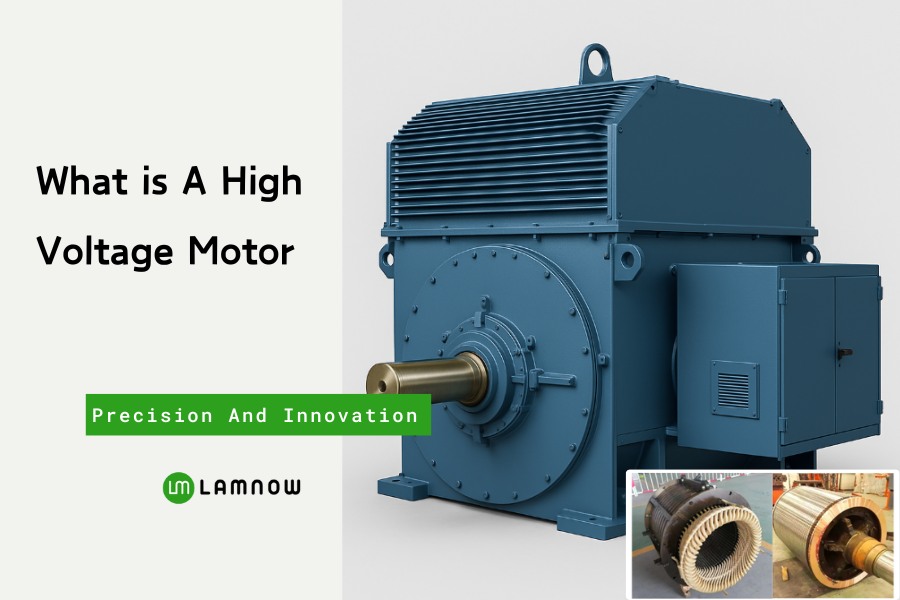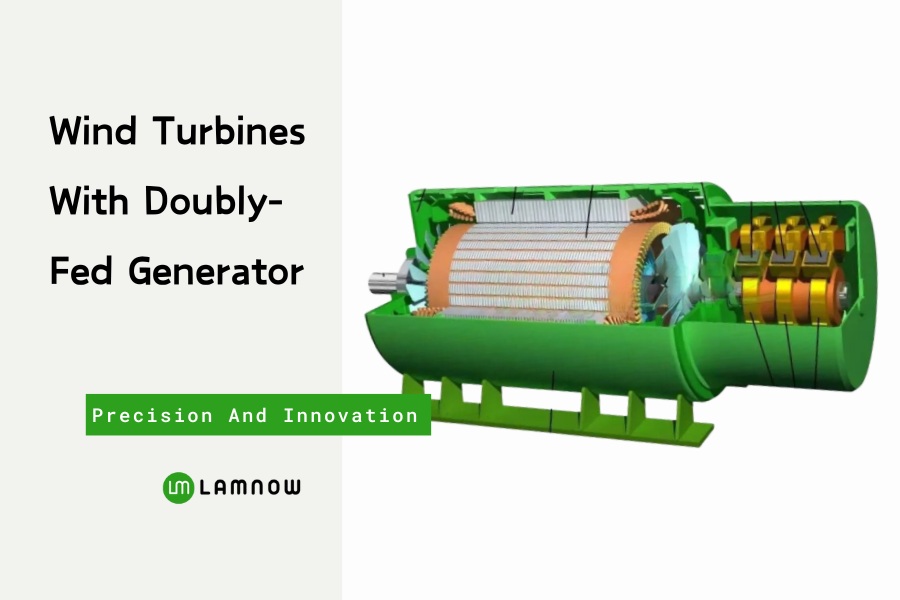Why can Tesla’s 3D6 Hairpin motor achieve both high power and high efficiency?
This motor adopts a compact flat-wire winding design, which improves slot fill factor and enhances heat dissipation. Within a limited space, it delivers remarkable power density and energy conversion efficiency, making it a standout component of the electric drive system.
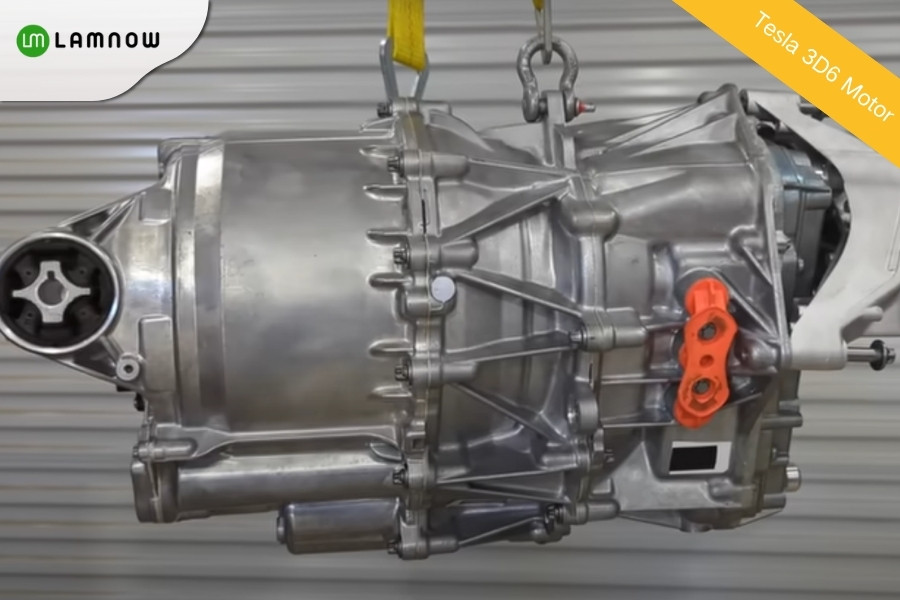
The 3D6 motor is Tesla’s first production hairpin motor, installed in the 2022 Tesla Model 3. Compared with earlier versions, it represents a major technological leap — switching from round-wire to flat-wire windings. Its power and torque densities reach new heights, achieving 19,000 rpm and 440 Nm respectively.
This performance improvement reflects the latest trend in electric drive development, making it worth studying and analyzing to understand the principles behind it.
3D6 Motor Technology
At first glance, the 3D6 looks similar to its predecessors. It still features an integrated design combining the motor, inverter, and gearbox, with no significant change in overall dimensions. When the motor is disassembled, its size also appears unchanged. The major evolution lies in the change of winding type — from round wire to flat wire.
3D6 Motor Stator – Hairpin Flat Wire Winding
The 3D6 maintains a 6-pole, 54-slot configuration, with stator laminations 0.28 mm thick. However, it now adopts the popular hairpin flat-wire winding and uses large copper busbars for phase connections.
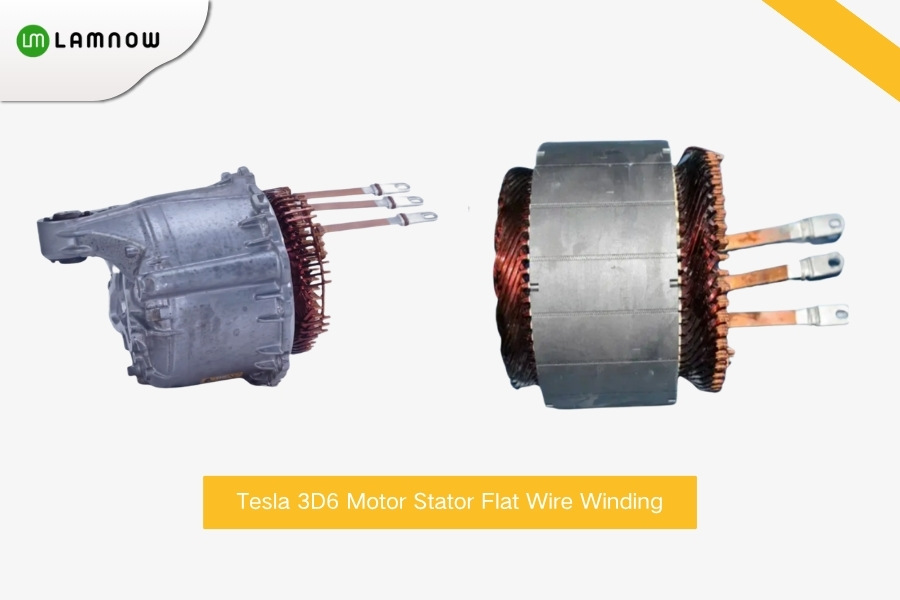
From another perspective, more details of the flat wire can be seen. Each slot contains five welds — that is, ten wires per slot. At the end winding, there are inner and outer star-point copper busbars. Each phase (A, B, C) has three branches connected at both inner and outer ends, giving a total of six parallel paths. This design supports a high-current, low-voltage architecture.
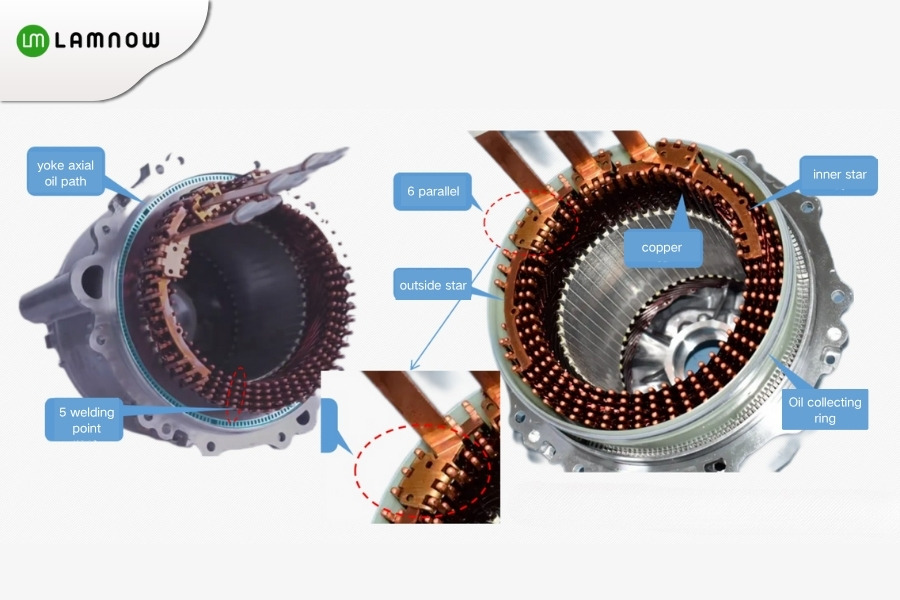
Looking closer at the copper details, the 3D6’s flat wire is extremely thin — roughly 1.5 mm thick and 4 mm wide (width-to-thickness ratio ≈ 2.6). Such a high aspect ratio makes the hairpin bending process more complex and requires high-precision forming equipment.

Cancellation of Varnish Coating
Another distinctive feature of the 3D6 motor is that Tesla eliminated the insulation varnish coating on the winding ends. The welded joints and copper busbars are left exposed. By contrast, most domestic brands typically apply varnish to ensure insulation and meet clearance requirements.
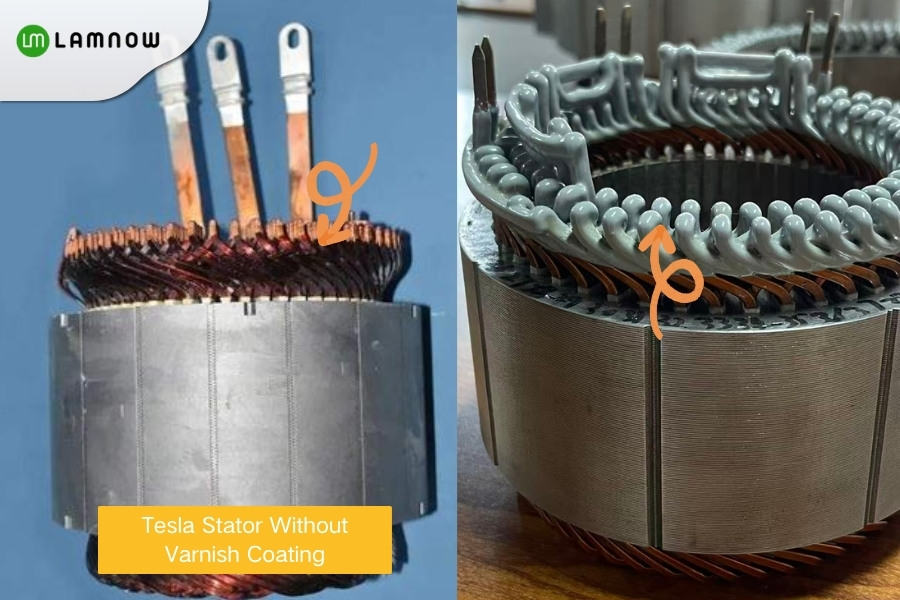
However, driven by cost reduction, Tesla took an unconventional and bold step — removing the coating process. This decision, while risky, perfectly reflects Musk’s cost-focused engineering philosophy.
After explaining the stator, you may be curious about the rotor. Let’s look further.
3D6 Motor Rotor
The rotor does not use the carbon-fiber wrap seen in previous versions. To reduce costs, Tesla reverted to the earlier 3D1 approach — a solid rotor core — but with further simplification.
Rotor Core
The rotor core remains largely similar to that of the 3D1, still using a single-V topology. Tesla simplified details by removing small surface auxiliary slots, keeping only the large slots near the magnetic bridges.
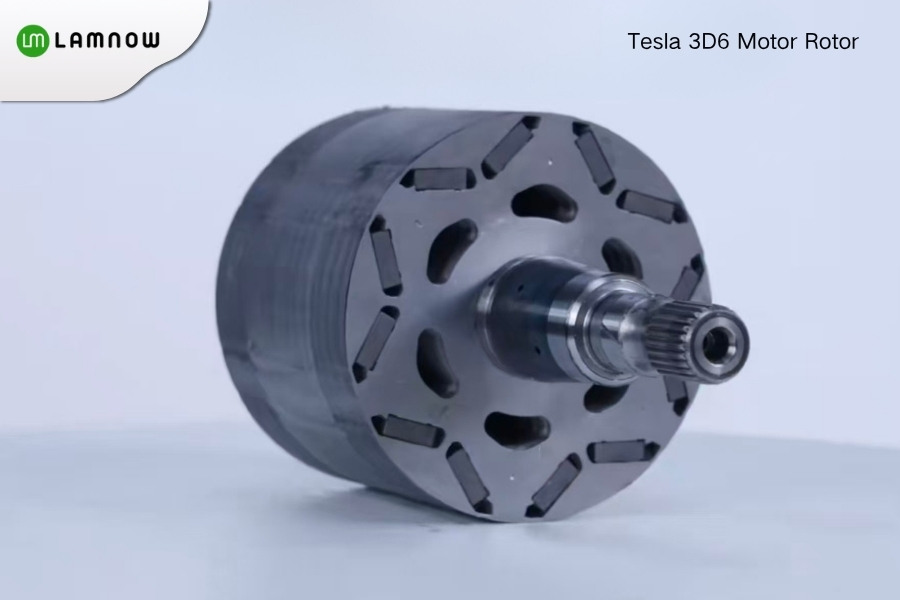
Another change is the smaller inner bore, which reduces the shaft’s outer diameter — again, a cost-saving measure that cuts material usage. Correspondingly, additional weight-reduction holes were added to the lamination stack. The 3D6 also includes six self-locking rivet points, improving inter-lamination bonding and reducing the need for heavy end plates.
Magnet Slots
Tesla’s cost-reduction strategy continues here. The 3D6 does not use resin potting to protect magnets — instead, the magnets are directly exposed to air, relying solely on their surface coating for protection. This, like the uncoated stator, is another “very Musk-style” decision.
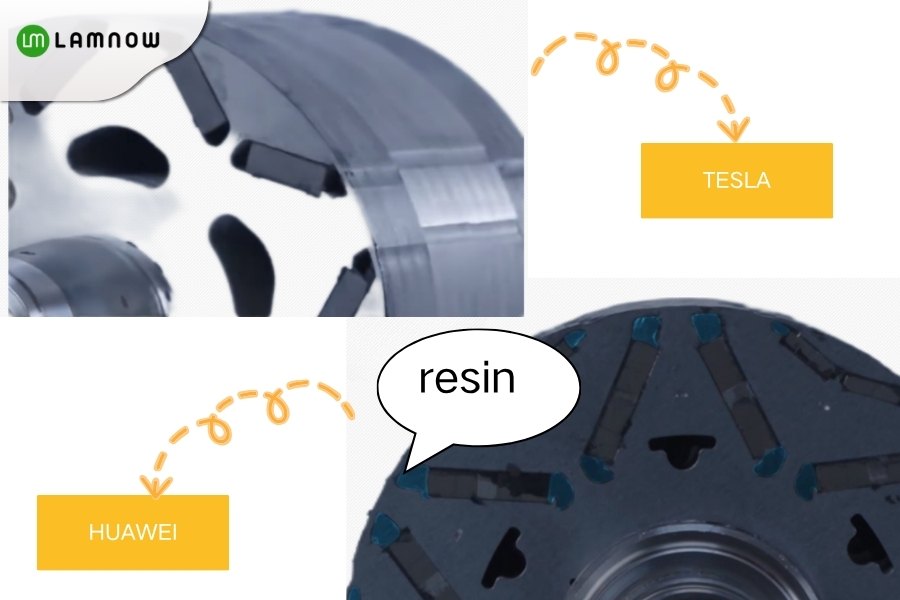
The cost-down philosophy is also reflected in the shaft design. The early 3D1 used a large hollow shaft welded from multiple parts. The 3D6 replaces it with a thinner, one-piece forged shaft, reducing both material and processing cost.
3D6 Motor Cooling System
Stator Cooling
The stator cooling system of the 3D6 is simplified compared to earlier versions. It still uses the same basic concept — oil flow through the yoke and showering the winding ends — but Tesla removed the annular oil channel within the stator core.
This eliminates the need for one additional stator stamping die set.
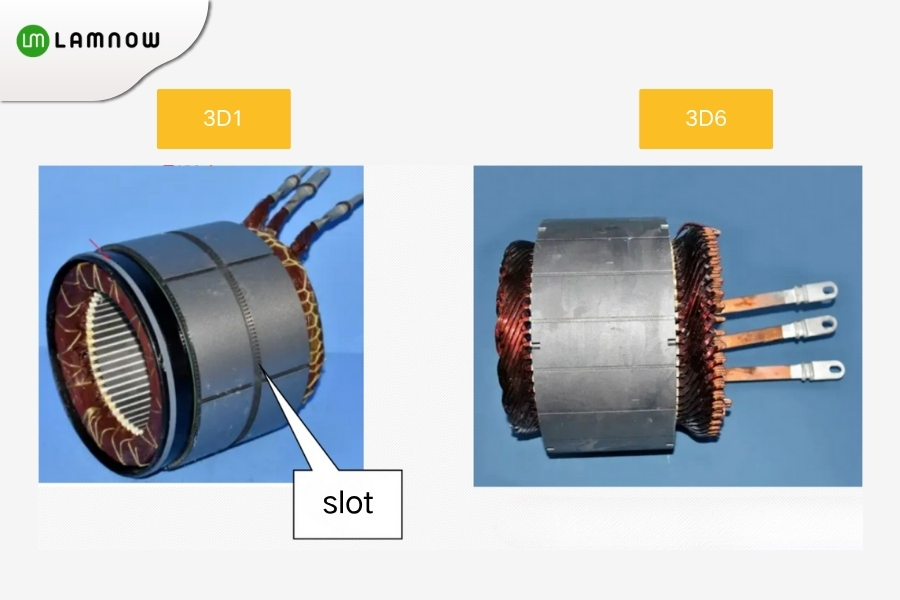
Previously, oil flowed from the middle of the core toward both ends, then entered the outer oil collection rings around the winding.
In the new design, the flow path changed. Oil first enters the space between the non-lead end oil ring and housing, then splits into two paths:
Through openings in the oil ring, dripping onto the winding ends;
Through the yoke oil channels, flowing axially through the core to the lead-out end oil ring, where it finally drips onto the windings.
This simplification, however, causes uneven flow resistance between the two sides — the second path has higher resistance, which may lead to unbalanced flow distribution.
To solve this, two improvements are used:
Increase the yoke oil channel cross-section to reduce resistance — indeed, 3D6’s channels are noticeably larger than those of the 3D1;
Reduce the flow resistance at the outlet-side oil ring to balance both ends.
Rotor Cooling
The rotor cooling scheme remains mostly unchanged. It still adopts the oil-cooled shaft and opposite-end oil-slinging concept.
As shown in the schematic, oil is ejected from holes in the rotor shaft, passes through the end-cap oil grooves, turns into the rotor core, travels along the shaft length, and is finally expelled through holes on the opposite end cap.
This layout has become one of the mainstream solutions in recent years — it provides strong rotor cooling capacity, though at the expense of higher oil-slinging losses at high speed.
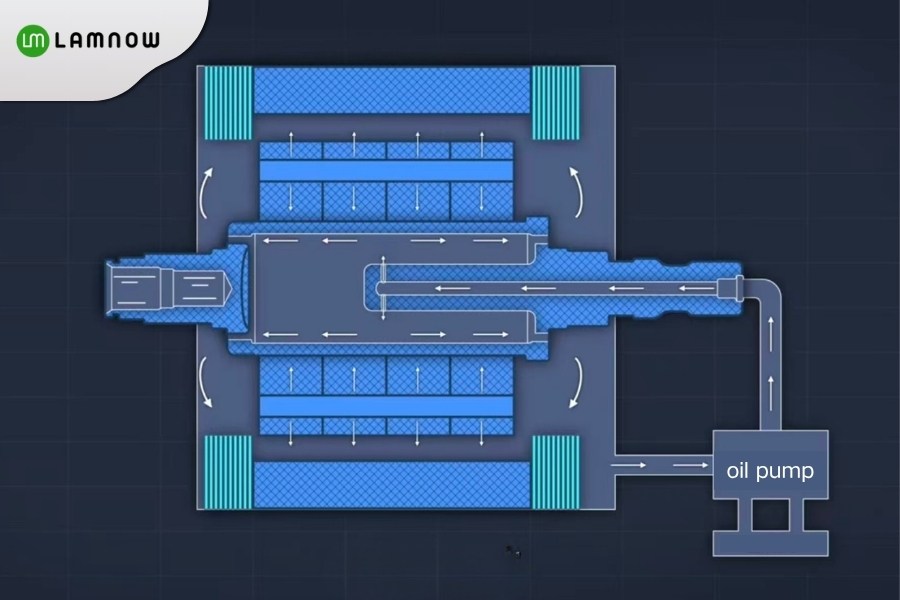
Why can Tesla’s 3D6 hairpin motor maintain such high efficiency even at high power density?
The answer lies in its flat-wire winding that increases copper fill and reduces resistance, a robust rotor structure that keeps the magnetic field stable at high speed, and an optimized cooling channel design that removes heat efficiently for sustained performance.
Hairpin Motor Winding – Choose Lamnow
Lamnow is a pioneer in motor core manufacturing, providing high-performance flat-wire stator winding solutions for customers worldwide. Our advanced production technology enhances power density, optimizes heat dissipation, and minimizes eddy-current losses, significantly improving the efficiency of electric vehicles and high-end industrial systems.
We also offer stator winding services for BLDC motors, permanent-magnet synchronous motors, and servo motors.
With automated production lines and strict quality control, Lamnow ensures rapid response, custom design, and industry-leading delivery capability — giving your motor cores a decisive competitive advantage.
Contact us today for professional winding support and efficient manufacturing services!

